Project Category: Electrical
Join our presentation
Join Us on April 5th
from 10:00 am – 12:30 pm
in the Engineering Building at Table 16
About our project
Our team developed a wearable passport system for verifying an individual’s identity using their biometrics. A simple tap of a wearable bracelet automatically verifies if the person is in possession of their own ID using their face biometrics. The solution can be used at checkpoints in airports’ customs or in other locations where identity verification is needed. The wearable device makes it easier and comfortable for people to always have access to their identification. The solution consists of two components interacting together, the wearable and check-in station. First, the wearable device worn by the user contains information about the user’s identity and a biometrics template of the face features unique to the user. The wearable device will be able to communicate biometrics and identity data to the verification check-in station. The check-in station uses a device that can capture the user’s face features and compares them with the provided biometrics from the wearable device to check if the user is the identity that they claim. The check-in station would provide verification results, success or failure, through a user-friendly interface.
Meet our team members

Details about our design
HOW OUR DESIGN ADDRESSES PRACTICAL ISSUES
Nowadays, individuals can provide their passports/local photo identification cards to confirm their identity. While the existing solution for identity confirmation is dominant all around the world, it has a huge pitfall which is very prominent in the numbers of identity theft cases reported. Identity theft is a serious crime that is on the rise. It takes place when a scammer uses an individual’s personal information without their knowledge or consent to commit fraud or theft. Apart from the individual’s photo, there isn’t a way to confirm the individual is who they claim to be. This project’s purpose is to create a new kind of ID “passport” that can help reduce identity theft crimes by using biometric data to confirm an individual’s identity.
WHAT MAKES OUR DESIGN INNOVATIVE
The most common method of identity verification currently only involves an assigned official comparing the individual with the photo presented to ensure they are the same individual. Apart from the individual’s photo, there isn’t a way to confirm the individual is who they claim to be. Hence, our project aims to innovate identity verification checkpoints through automation and the use of biometric data for improved results.
WHAT MAKES OUR DESIGN SOLUTION EFFECTIVE
Our design solution aims to automatically verify if the person is in possession of their own identity which removes the need for an official that may introduce human error to the verification process. Additionally, the passport would be in the form of a wearable to make it easier and comfortable for individuals to have access to at most times.
HOW WE VALIDATED OUR DESIGN SOLUTION
We validate our design through hardware testing and software testing.
For hardware testing, we use the “Performance Evaluation Table”. Each table targets specific components with requirements. All team members are going to evaluate test results with a “Yes” or “No” anonymously. The team is going to discuss and improve the design if a “No” is voted. If the new design cannot meet the requirement(s) through internal discussions, the team would look for help from TA, advisor, sponsor, and even the course instructor.
For software testing, alongside testing mentioned above, including testing performance against requirements, additional testing was implemented for software components:
- Unit Testing, Integration Testing, System Testing and Acceptance Testing was performed with the software development.
- Interclass and Intraclass validation was completed to ensure matching algorithm correctly identifies user. The system was tested against different images of the correct individual (interclass) to ensure the person is correctly verified. The system was also tested against images of other individuals (intraclass) to ensure the system would not verify individuals who do not match the identity.
FEASIBILITY OF OUR DESIGN SOLUTION
Although our current prototype of the passport is not as compact, with an approximate price of ($180) using the available hardware as a proof of concept, we believe our design solution is feasible. The final product of the “passport” can be reduced in size to the dimension of a toonie making it super easy to carry at all times with a price of $1. Additionally, the python user-interface makes it easy to implement on any existing computer system, although our preferred platform would be Linux machines.
Partners and mentors
The development of a wearable ‘passport’ for identity verification using biometrics and communication protocols is a project in collaboration with the University of Calgary’s Biometric Technologies Laboratory. The success of our project would not have been possible without the support of Dr. Svetlana Yanushkevich (Project Sponsor), Dr. Geoffrey Messier (Academic Advisor), and Tariq Al Shoura (Project TA). Their helpful feedback and suggestions were key considerations in our design solution and documentation.
Our photo gallery
Overall Design
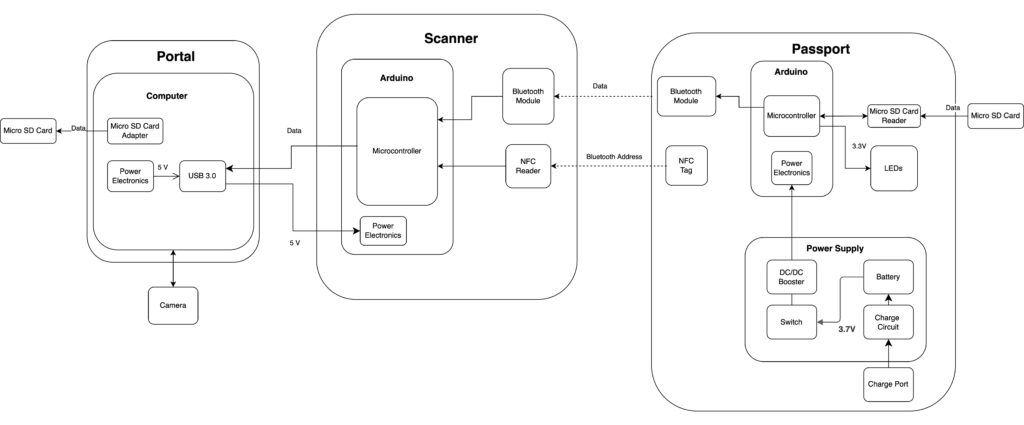
User Interface
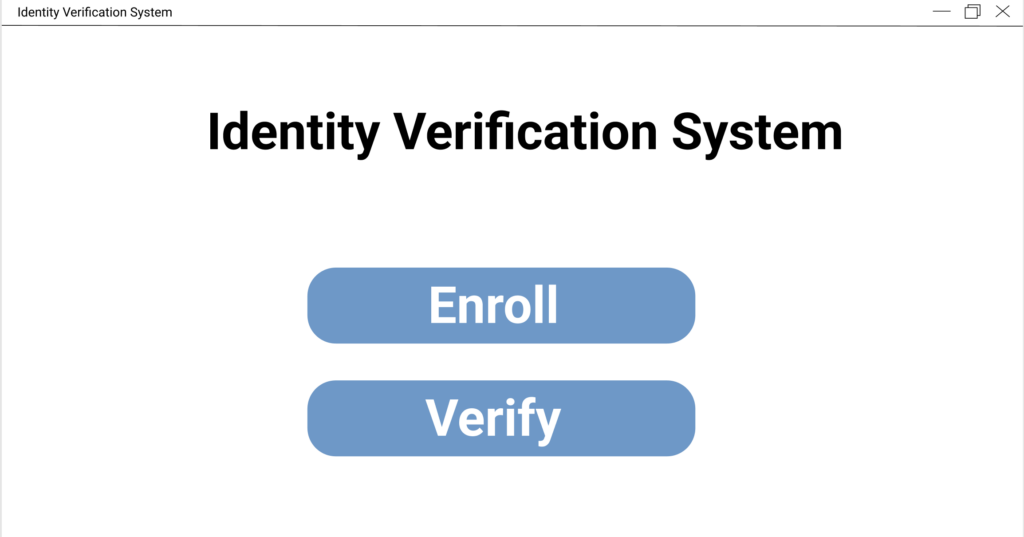

Component Rendering

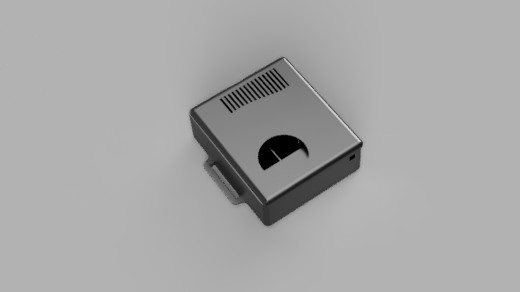
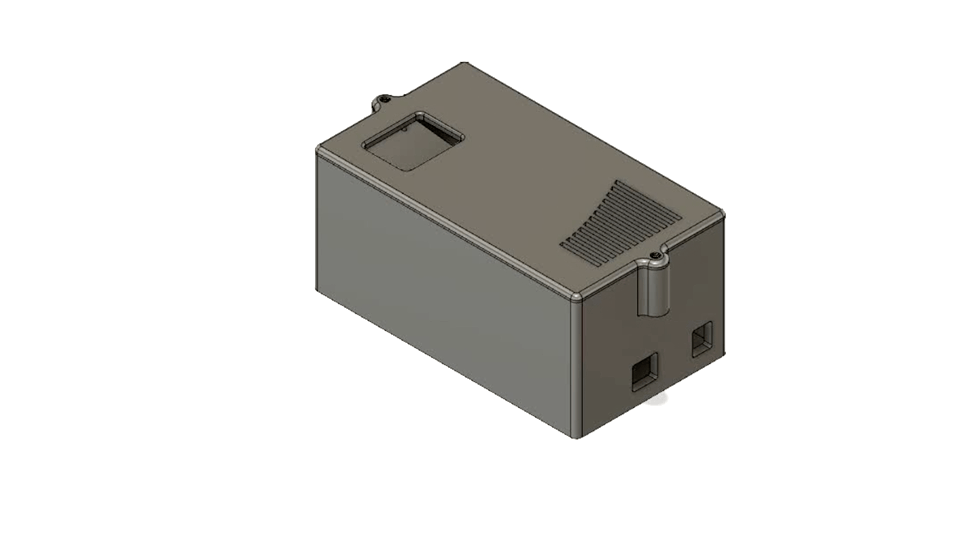
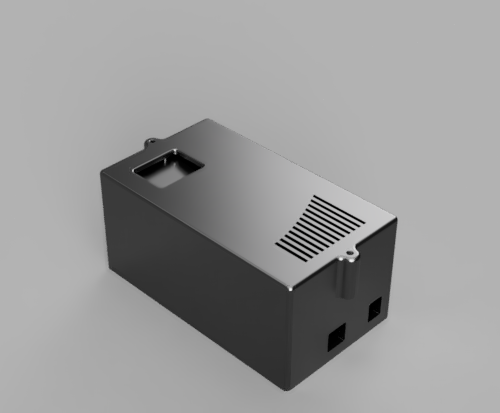
References
- “Developer Study Guide: Bluetooth® Low Energy Security,” [Online]. Available: https://www.bluetooth.com/bluetooth-resources/le-security-study-guide/.
- “Everything you need to know about MiFi,” allconnect.com, [Online]. Available: https://www.allconnect.com/blog/what-is-mifi.
- Pyserial Short Introduction, Read the Docs, [Online]. Available: https://pyserial.readthedocs.io/en/latest/shortintro.html.
- Welcome to OpenCV-Python Tutorials’s documentation!, Read the Docs, [Online]. Available: https://opencv24-python-tutorials.readthedocs.io/en/latest/.
- “Interested in 3D printing?,” University of Calgary, [Online]. Available: https://schulich.libguides.com/m2z/manufacturing/3d-printing.
- S. P. Shilpi Singh, “Techniques and Challenges of Face Recognition: A Critical Review,” Procedia Computer Science, vol. 143, no. 1877-0509, pp. 536-543, 2018.
